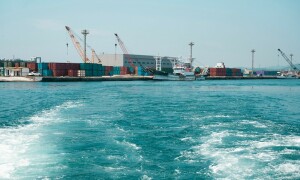The foreign trade situation of the country seems to be deteriorating every month. According to the latest data released by the Federal Bureau of Statistics (FBS) on 12th May, 2006, Pakistan's trade deficit widened by 93.65 percent to 9.427 billion dollars during July-April, 2006 as against 4.868 billion dollars during the same period last year.
Exports during this period registered a growth of 17.80 percent to 13.523 billion dollars, while imports shot up by 40.38 percent to 22.951 billion dollars. On a monthly basis, trade deficit rose by 33.61 percent to 807.918 million dollars in April 2006 as compared to 604.665 million dollars in the same month last year.
An unprecedented increase in imports, which was responsible for the huge trade deficit, resulted from a number of factors. The increase in international oil prices led to a gradual increase in the oil import bill since the fiscal year 2003-04, but its price impact was the largest in absolute value terms during the current year.
Imports of items under machinery and metal group, road motor vehicles, oil seeds, wheat, sugar and pulses also recorded sharp increases, while, on present trends, exports are lagging behind the target of 18 billion dollars by a considerable margin.
The trade deficit is not only widening but is likely to surpass the target by a huge margin. The government had projected a trade deficit of 4.16 billion dollars for the whole financial year, but it has already more than doubled and could easily cross the 11 billion dollars mark by the end of June, 2006. It is true that the trade gap may not be very worrying if other items like home remittances and official transfers could keep the current account balance under control.
But here again the situation is not encouraging. As against the original target of 2.2 percent of GDP, the current account deficit of the country, according to the latest quarterly report of the State Bank, is likely to mount to 4.7 percent of GDP.
It simply means that the country is consuming much more than its income, which by any standard is not a sustainable situation. Foreign exchange reserves of the country have not decreased mainly because of privatisation proceeds, sale of foreign currency bonds and certain official transfers, but the receipts from such sources are likely to dry up over time.
Obviously, the trend of increasing trade deficit is a high downside risk to the economy and needs to be reversed. Swelling trade deficit would eventually cause a drop in the value of the rupee against other currencies, which would further create inflationary pressures in the economy and aggravate the miseries of common man. Unfortunately, the country's economic policy makers do not seem to realise the gravity of the situation and are trying to take credit for achievements like increasing exports to 18 billion dollars, and maintaining an adequate level of reserves which do not depict the totality of the picture.
For instance, overall trade balance is more important than the level of exports and one may have been justified in taking pride in the level of reserves if these reflected net earnings of the country. In our view, it is high time for the policy makers to take stock of the situation and design appropriate measures to narrow the trade gap to manageable limits.
There is urgent need to contain overall import demand in the economy by adopting restrictive fiscal and monetary measures. Obviously, fiscal deficit has to be reduced and interest rates have to be increased for the purpose. In addition, Pak currency needs to be depreciated to a certain extent. Its parity cannot remain stable if prices in Pakistan are increasing at a much faster rate than our competitors and trading partners'. The authorities cannot avoid the day of reckoning if the present trends in the external sector continue.
BR100
12,702
Increased By
113.8 (0.9%)
BR30
38,258
Increased By
378.2 (1%)
KSE100
118,383
Increased By
1067.8 (0.91%)
KSE30
36,395
Increased By
278.8 (0.77%)






















Comments
Comments are closed.